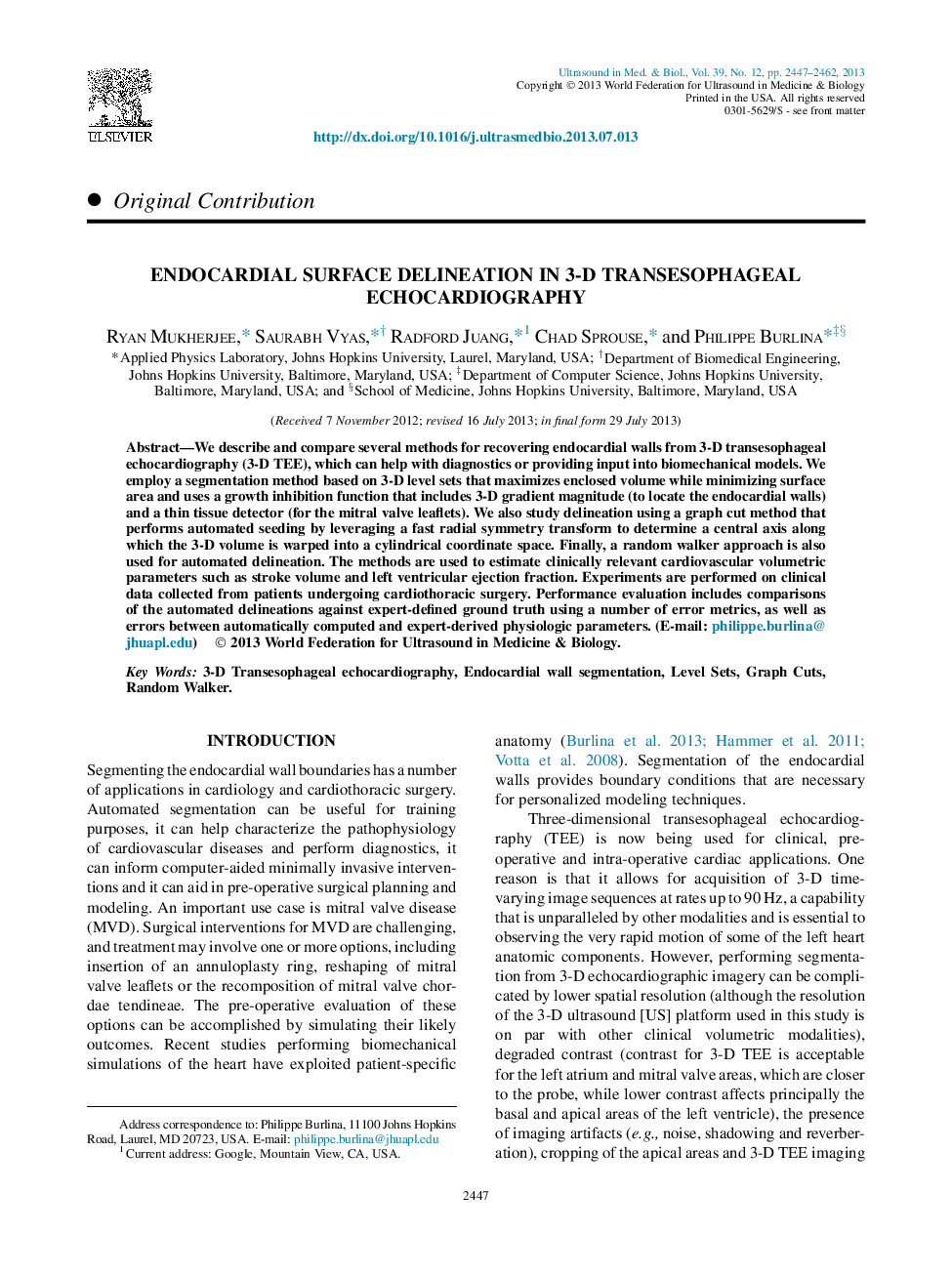| Article ID | Journal | Published Year | Pages | File Type |
|---|---|---|---|---|
| 1760525 | Ultrasound in Medicine & Biology | 2013 | 16 Pages |
Abstract
We describe and compare several methods for recovering endocardial walls from 3-D transesophageal echocardiography (3-D TEE), which can help with diagnostics or providing input into biomechanical models. We employ a segmentation method based on 3-D level sets that maximizes enclosed volume while minimizing surface area and uses a growth inhibition function that includes 3-D gradient magnitude (to locate the endocardial walls) and a thin tissue detector (for the mitral valve leaflets). We also study delineation using a graph cut method that performs automated seeding by leveraging a fast radial symmetry transform to determine a central axis along which the 3-D volume is warped into a cylindrical coordinate space. Finally, a random walker approach is also used for automated delineation. The methods are used to estimate clinically relevant cardiovascular volumetric parameters such as stroke volume and left ventricular ejection fraction. Experiments are performed on clinical data collected from patients undergoing cardiothoracic surgery. Performance evaluation includes comparisons of the automated delineations against expert-defined ground truth using a number of error metrics, as well as errors between automatically computed and expert-derived physiologic parameters.
Keywords
Related Topics
Physical Sciences and Engineering
Physics and Astronomy
Acoustics and Ultrasonics
Authors
Ryan Mukherjee, Saurabh Vyas, Radford Juang, Chad Sprouse, Philippe Burlina,
